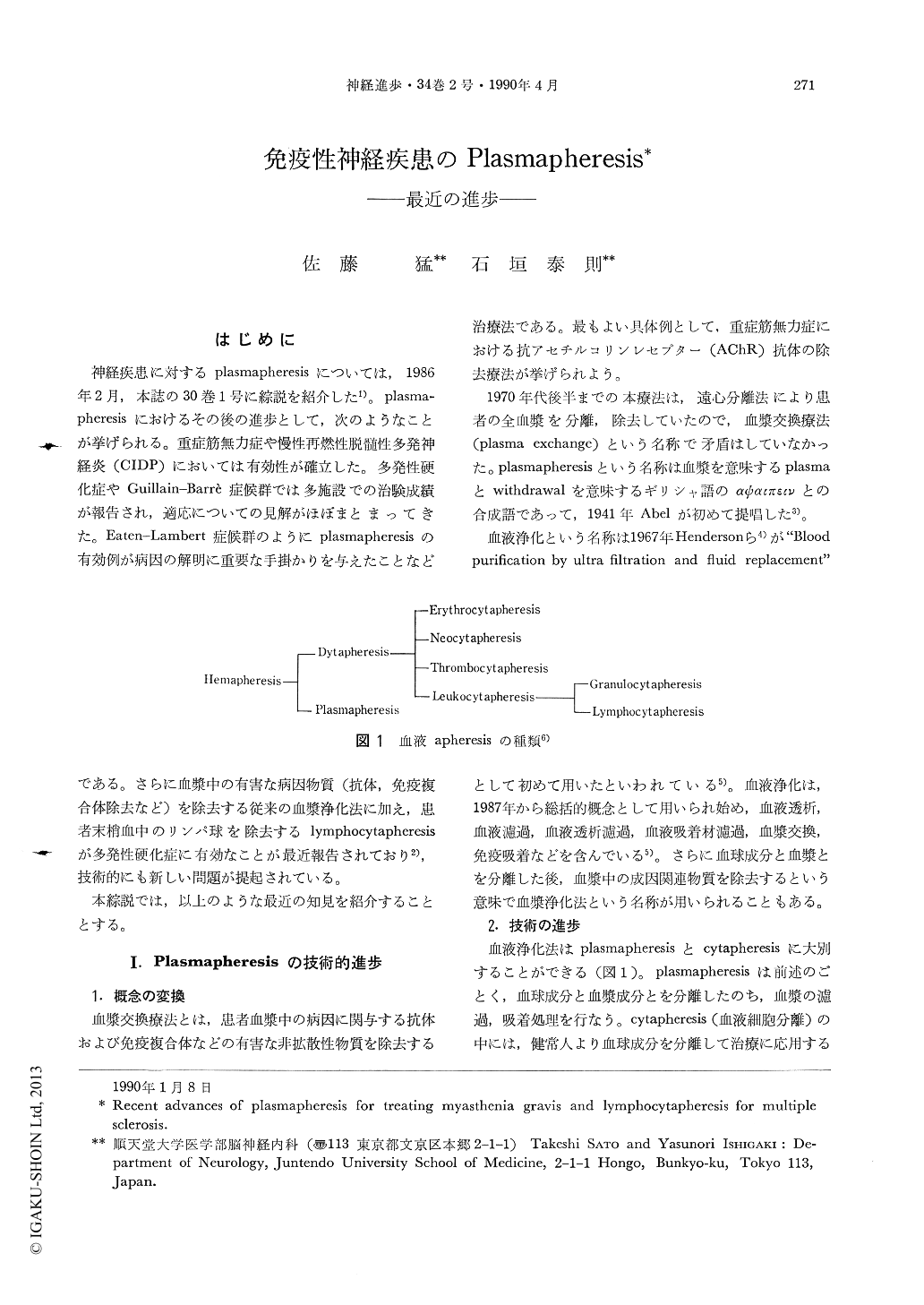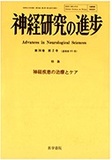Japanese
English
- 有料閲覧
- Abstract 文献概要
- 1ページ目 Look Inside
はじめに
神経疾患に対するplasmapheresisについては,1986年2月,本誌の30巻1号に綜説を紹介した1)。Plasmapheresisにおけるその後の進歩として,次のようなことが挙げられる。重症筋無力症や慢性再燃性脱髄性多発神経炎(CIDP)においては有効性が確立した。多発性硬化症やGuillain-Barré症候群では多施設での治験成績が報告され,適応についての見解がほぼまとまってきた。Eaten-Lambert症候群のようにplasmapheresisの有効例が病因の解明に重要な手掛かりを与えたことなどである。さらに血漿中の有害な病因物質(抗体,免疫複合体除去など)を除去する従来の血漿浄化法に加え,患者末梢血中のリンパ球を除去するlymphocytapheresisが多発性硬化症に有効なことが最近報告されており2),技術的にも新しい問題が提起されている。
本綜説では,以上のような最近の知見を紹介することとする。
This review summarizes the rationale and effects of immunoadsorption plasmapheresis for treating myasthenia gravis and lymphocytapheresis for multiple sclerosis.
1. Plasmapheresis for treating myasthenia gravis
For the treatment of severe myasthenia gravis (MG), plasmapheresis has been used for removing anti-acetylcholine receptor (AChR) antibodies. Its efficacy is widely accepted for the immediate control of myasthenic symptoms. We established a new method of plasmapheresis which more selectively and effectively removes AChR antibodies from the sera of MG patients and which has proven to be more cost effective due to the elimination of albumin replacement fluid. This method is based on a new adsorbent using tryptophan-conjugated polyvinyl alcohol resin (IM-T). Remarkable clinical improvement occurred in patients with myasthenia gravis after repeated long-term plasmapheresis using IM-T. The IM-T column has a higher efficiency for adsorbing anti-AChR antibodies from the plasma of myasthenic patients than does conventional plasmapheresis using a double filtration membrane or the centrifugation method.

Copyright © 1990, Igaku-Shoin Ltd. All rights reserved.


